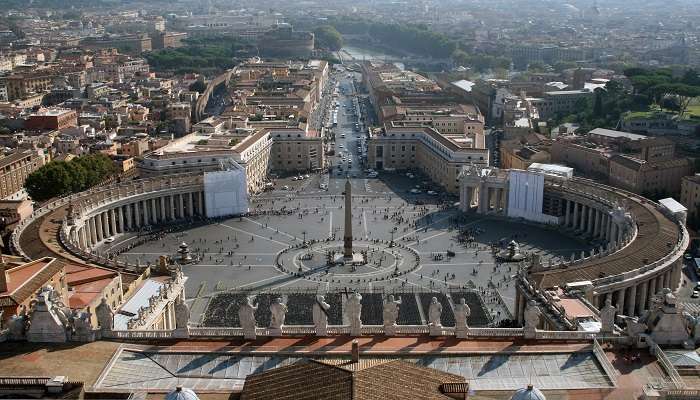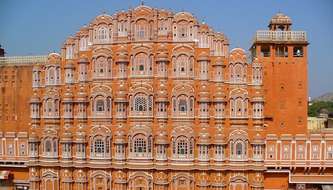Undeniably, one of the most talked-about museums globally, The Louvre Museum has effortlessly captured the attention of people worldwide. Famed for its iconic glass pyramid entrance, this museum stands proudly as the largest museum in the world. While tourists flock year after year to witness its timeless art, there is more to this cultural icon than the popular Mona Lisa. Join us on a fascinating journey as we unveil the top 6 intriguing facts about Louvre Museum, exploring the history, art, and cultural marvels that define this unparalleled institution.
So, wait no more. Grab your reading glasses and brush up your knowledge / ignite your curiosity as you go through this descriptive blog on the top 7 untold facts about the Louvre museum, in Paris.
Why is it called the Louvre?
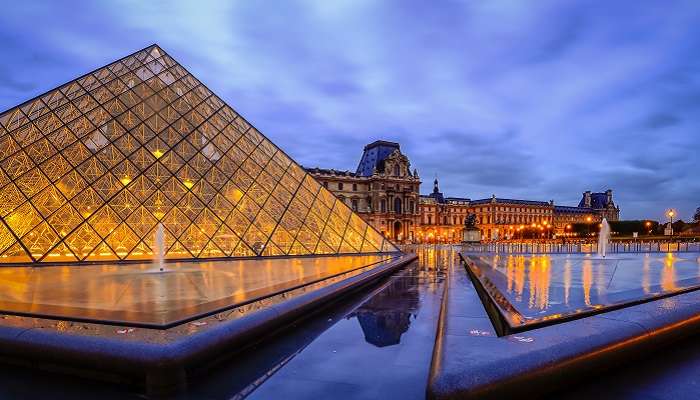
The name “Louvre” carries a rich history that dates back to the roots of this regal institution. Originally, the Louvre was a royal palace, and the term itself is thought to stem from the French phrase “ l’Œuvre”, meaning “the construction”. Over time the palace underwent transformations eventually becoming the renowned Louvre museum that we know today. Named after the grandeur of its origin, The Louvre museum embodies more than a museum-its a testament to the legacy that is deeply entwined with centuries of history and craftsmanship, standing as a beacon of art and culture.
Must Read: Things To Do In Paris
Best Time to visit the Louvre

If you’re planning to visit this notable landmark on your trip to Paris, the off-peak season is probably one of the most ideal times to visit during the late fall (November) and winter. However, avoid visiting around major holidays. Ditch the weekends and instead plan this museum tour in the early mornings or late afternoon during weekdays to escape the crowd and relish a comfortable visit.
Famous sections of the Louvre museum
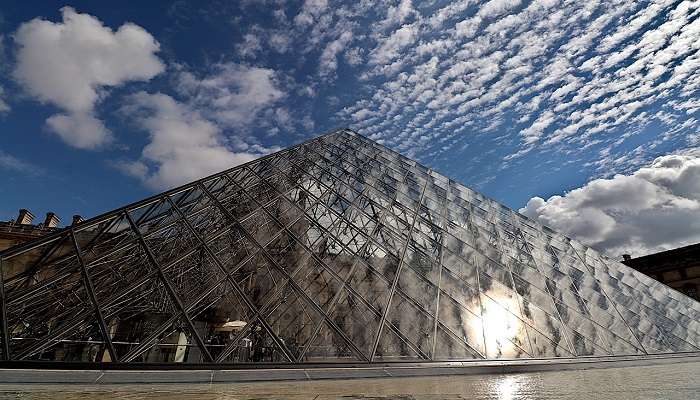
Image Credit: GAIMARD for Pixabay
Denon Wing
The Denon Wing at the Louvre is a cultural cornerstone, housing timeless masterpieces like the “Mona Lisa” and Italian Renaissance art. It stands as a testament to centuries of Louvre Museum history, displaying an evolving story of artistic brilliance.
Sully Wing
The Sully Wing showcases mediaeval Louvre fortress foundations and collections, hosting a captivating array of mediaeval and Renaissance artefacts. This historical enclave intertwines with the Louvre Museum artworks, creating an immersive experience that spans centuries
Richelieu Wing
The Richelieu Wing is a treasure trove of French sculptures, paintings by artists like Delacroix, and decorative arts. Within its galleries, the narrative of Louvre Museum artworks seamlessly integrates with the broader strokes of France’s cultural heritage.
Islamic Art Section
Unfolding the beauty of Islamic art through ceramics, textiles, and artefacts, this section provides a rich insight into the cultural heritage of the Islamic world, spanning over a millennium.
Egyptian Antiquities
The Egyptian Antiquities section houses ancient wonders like the Sphinx and the Code of Hammurabi. Here, the Louvre Museum artworks narrate the tales of ancient civilizations, creating a captivating fusion of history and art.
Near Eastern Antiquities
Unveiling the mysteries of Mesopotamia, Persia, and the Levant, this section exhibits artefacts that shed light on the diverse and ancient civilizations of the Near East.
Greek, Etruscan, and Roman Antiquities
This wing houses classical sculptures, pottery, and artefacts from ancient Greece and Rome, offering a glimpse into the grandeur of classical civilizations. Amidst these masterpieces, the Louvre Museum’s history unfolds, making this wing a living testament to the enduring legacy of human creativity.
Decorative Arts
The Decorative Arts section stands as a tribute to the craftsmanship and opulence of bygone eras, showcasing superb furniture and ornamental pieces spanning diverse epochs.
Suggested Read: Places To Visit In Paris
6 Untold Facts About Louvre Museum
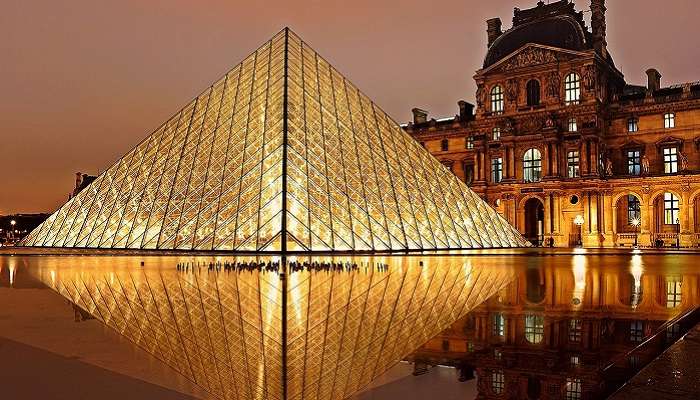
Image Credit: EdiNugraha for Pixabay
The Famous Louvre Pyramid didn’t come from France
Among the most surprising facts about Louvre museum, this fact highlights the controversy surrounding the selection of L.M. Pei, a Chinese-American architect for the Louvre pyramid in the classical Cour Napoléon. Despite the local outcry, Pei’s global acclaim earned through projects like the National Gallery of Art prevailed. Today, the Louvre pyramid rivals the Eiffel Tower in fame among Parisians as a representation of the amalgamation of history and modernity, adding a captivating chapter to the intricate mosaic of Louvre museum history.
The Louvre has four floors of art
One of the most astonishing facts about the Louvre Museum is its extensive art collection thoughtfully arranged across four floors, offering visitors a dynamic journey through history and artistic expression. The lower ground floor hosts temporary exhibitions, while the ground floor introduces pivotal sculptures like the renowned “Venus de Milo.” Progressing upwards, the first and the second floors reveal a detailed network of European paintings, ancient artefacts, and decorative arts. This multi-level structure is enthralling for art enthusiasts across the world, as it promises a comprehensive look at the wide range of Louvre museum artworks, from Renaissance masterpieces to Egyptian artefacts.
4000 Artworks were displaced during the WW-II
In an extraordinary endeavour during the Nazi occupation of Paris, Jacques Jaujard, a senior civil servant, protected over 4,000 artworks from the Louvre. Fearing the Nazi penchant for destruction, he organised their relocation to a Loire Valley château, preventing them from suffering a fate similar to the 3,825 artworks of “little value” that were destroyed in 1939. These crucial actions highlight the indomitable spirit that safeguards the diverse heritage of facts about the Louvre Museum.
The Monalisa is under bulletproof glass
Adding to the fascinating tapestry of facts about Louvre Museum is the pinnacle of artistry by Leonardo da Vinci, the Mona Lisa, which graces Room 711 on the first floor. Bulletproof glass and armed guards surround this renowned masterpiece, not only commanding artistic admiration but also boasting a history of daring theft and enhanced security. Stolen in 1911 and recovered two years later, the Mona Lisa now captivates visitors with its allure, as layers of protection heighten the experience of encountering this widely celebrated Louvre museum artwork.
It would take 100 days to see all of the art in the Louvre museum
The scale of the Louvre museum is staggering, evident in the fact that dedicating a mere 30 seconds to each artwork would demand an uninterrupted 100-day endeavour. Achieving this in a single day is an impossible task, and even a month would prove insufficient. The sheer magnitude of the collection transcends the bounds of unconventional exploration. Amid this wealth of art, the alluring Le Marais, a historic district in Paris, awaits just a fifteen-minute stroll—a delightful contrast to the enormity of the museum. This remarkable statistic underscores the Louvre’s status as an unparalleled repository of art, making it one of the most intriguing facts about Louvre Museum.
The Louvre was originally a fortress
Among the most astounding facts about Louvre Museum is its origin in the 12th century, when Philip II commissioned the construction of the Louvre as a fortress amid concerns about an English invasion. Positioned in what was once known as Wolf Country, strategic walls were erected along the Seine to fortify against potential threats. Completed in a mere 12 years, the fortress became an epitome of indestructible defence. The evolution of this formidable stronghold into the prestigious Louvre Museum was an unforeseen transformation from its original purpose. A testament to wartime exigencies, the Louvre’s shift from fortress to cultural haven illustrates history’s capacity to reshape societies, replacing defensive systems with enduring collections of art and culture.
Further Read: Wineries In Paris
Now that you are familiar with the top 7 untold facts about Louvre museum, it’s time for you to pack your curiosity and head out on a journey through hidden chambers and artistic wonders of this cultural landmark on your next trip to Paris. The Louvre awaits, guaranteeing not just a museum visit but a rendezvous with history, art, and the enchantment of Parisian magic.
For our editorial codes of conduct and copyright disclaimer please click here.
Cover Image Credit: Janeb13 for Pixabay
Frequently Asked Questions About Facts About Louvre Museum
What is the Louvre Museum famous for?
The Louvre museum is famous for its diverse and vast art collection, including the iconic masterpieces like the Mona Lisa and the Venus de Milo.
What are the Louvre Museum's opening hours?
The Louvre is open daily except Tuesdays. Regular opening hours of the Louvre Museum are from 9:00 a.m. to 6:00 p.m., with extended hours of 9:45 p.m. on Wednesdays and Fridays.
Name some of the amazing Louvre museum artworks.
Some amazing artwork at the Louvre include the Mona Lisa, Venus de Milo, Winged Victory of Samothrace, Liberty Leading the People, and the Raft of the Medusa.
Is it allowed to click pictures inside the Louvre?
Photography is generally allowed, but the use of tripods and flash lights is prohibited in certain sections.
Can the tickets for the Louvre Museum be bought online?
Yes, the tickets for the Louvre can be booked online in advance to avoid long queues at the entrance.
People Also Read:
Facts about Roman Forum Facts about Burj Khalifa Facts about Sagrada Familia



